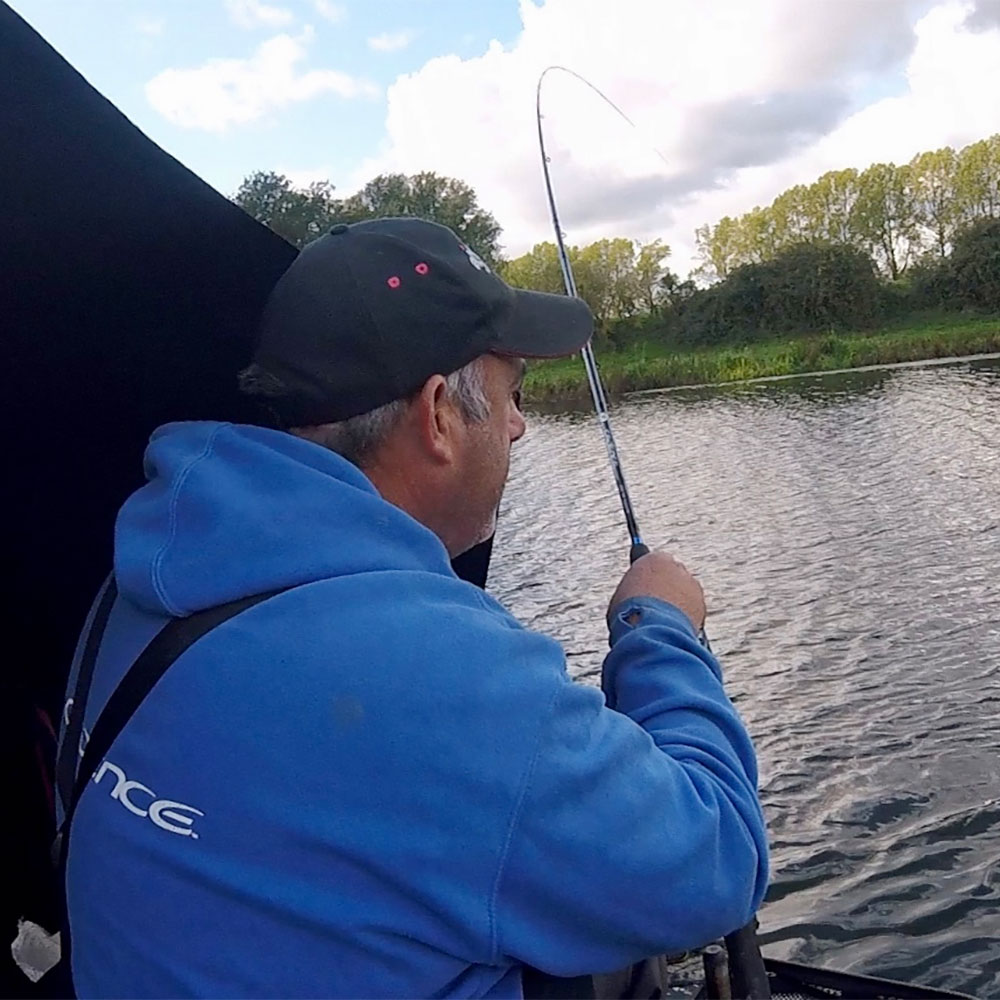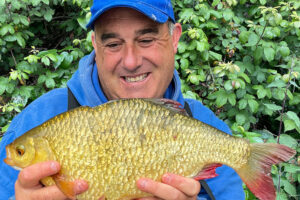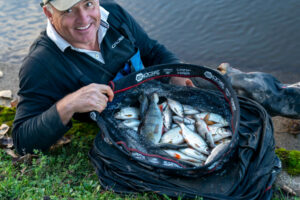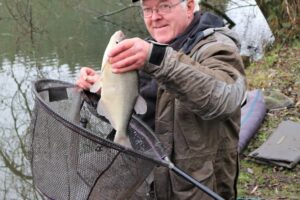Winter can be a productive time on the rivers where I live. Whether we have a cold or warm winter, there is always some fish to catch. It’s just a case of refining the approach, location and most of all, being patient when it comes to winter fishing success.
We have some great fishing on smaller rivers and drains, where double figures of roach can be commonplace, but it’s the bigger river I like to target.
The River Ouse itself is a fickle creature, one or two town areas can be solid with roach but also very busy, so it’s the main out of the way sections of the river I like to target. The last couple of winters, I have been able to pick up one or two decent nets of fish, including some nice tench and hopefully one or two tips I have, may also help you to do the same.
Location – Find Fish when Winter Fishing
Location is the most important factor for any form of fishing, and in winter, this is a must. I firmly believe the fish here are creatures of habit and if you’ve caught one or two in an area previously, then they won’t be a million miles away again.
I always try to get out on the bank just as it’s getting light. I believe it is the best time to spot fish. Mornings are often flat calm, and if I see a few topping, then that isn’t a bad area to sit. There are several hot spot areas along the Ouse, for roach especially.
Last season I managed to locate one or two bream shoals by getting out early or walking about at dusk, they don’t always feed but finding them can be handy. This again gives you an extra boost in choosing your swim location for your session. If you see fish regularly over a couple of days, then there is a good chance of a bite or two.
Winter Fishing Tactics
Winter fishing tactics need to be fine-tuned, not too much as even in winter a 5lb tench can lead you a merry dance.
The waggler or pole can score well with roach in a feeding mood with only lighter hooklengths, and smaller hook sizes called for. Double pinkie can be the mainstay hookbait with single red or dead maggot a good change. Don’t neglect hemp or even tares, as in winter roach will snaffle a grain of hemp on the hook as quickly as a maggot. It might take longer, as you’d expect, but the sport on the seed can be tremendous in the right conditions.
Fishing a lighter than usual float can make all the difference between the fish reacting positively or sitting there bite less.
My method of choice is usually the feeder, again you need to be prepared to wait, but this method can produce a bonus fish or two. I tend to keep the mainline the same with just the hooklength receiving any attention. For a maggot and pinkie approach, I will drop as low as 009 if need be with 011 being an average starting point. If I’m on the worm, then I will drop no lower than 011, favouring my usual 013 as a start. I’ve found fluorocarbon can also produce one or two bites out of the blue, so it’s always worth having a few hooklengths tied up from 010-013.
On the business end, all I do is vary the hook size and pattern, favouring a finer wire for maggot or pinkie and a smaller size than usual for the worm.
Feeder size is all-important, especially to suit the conditions, feed too much, and you can kill your swim straight away, feed too little, and there won’t be enough feed to hold them there. As a rule of thumb, I like to feed around ten big feeders of groundbait right at the start. Now, this may seem a lot for winter, but bear in mind the depth of water here can be 20ft in places, a couple of feeders isn’t even a drop in the ocean. The deeper the peg, the more bait I will introduce into the swim. A bait up feeder is ideal for this, as a fair amount of feed can be added quickly, with a basket feeder as the preference for introducing any loose offerings.
I usually feed with a second rod set up, purposely for feeding and nothing else, and this is where measuring sticks are a huge advantage to feeding and fishing the exact same area. A meter or two away can be the difference a bite or none at all. These fish won’t be chasing around too much.
The rod itself doesn’t need to alter much when winter fishing. I opt for a lighter tip to show each bite indication more clearly. A 1-1.5oz tip is more than enough in most situations, you may need to step up slightly if any water is on, but mostly 1.5oz will cover all eventualities. The Cadence CR10 11ft #1 Feeder or Cadence CR10 12ft #2 Feeder tip rods are a perfect choice, with the option of a Cadence CR10 13ft #2 Feeder as a backup in adverse conditions.
Fish a distance you can comfortably cast clipped up to easily, there isn’t much point fishing at 35m if you can’t hit it should conditions change. Carrying an array of rods to cover all bases is a must, even if you don’t use them, they are there if required.
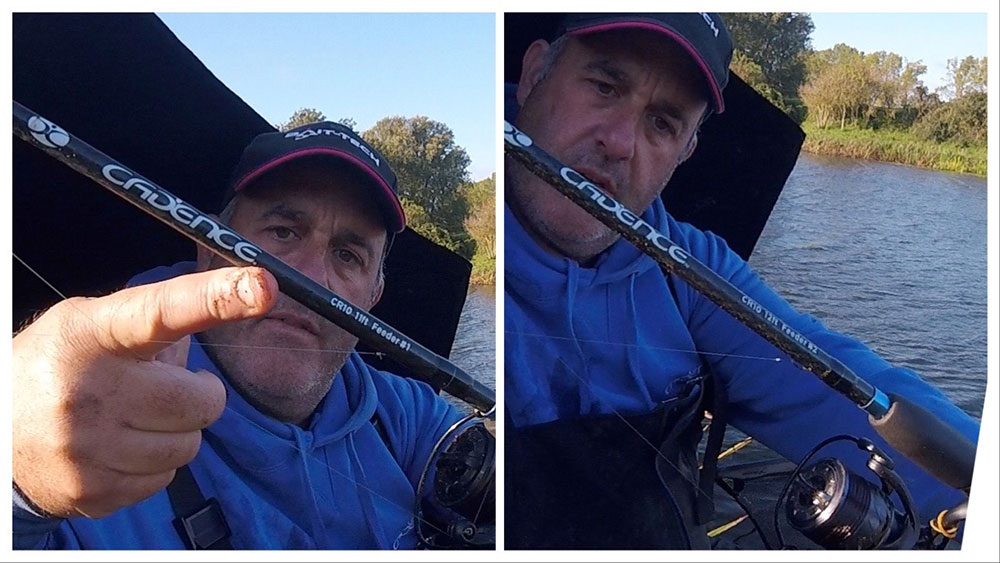
Bait
On the bait front, you won’t need to use loads when winter fishing. Half a pint of maggots and pinkies could last 3 or 4 weeks quite easily, after all, it’s only really for hook bait. A quarter pint of dead maggot and same of dead pinkie is ideal for a session and perfect for introducing with the initial feed.
I like to prepare mine by buying half a pint of each, riddle off any maize and split into separate bags. Bang them in the freezer and tip into water as soon as you get onto the bank. Caster is again a bait that you’ll need to take with you but feed sparingly, and half a pint usually covers two sessions for me. A kilo of worm will last you most of the winter unless you find a school of feeding bream. A handful of worms chopped up is more than enough in most instances, with a tiny pinch with a couple of casters added into the feeder each cast.
Groundbait
Groundbait is an area I have spent a lot of time with over the last couple of seasons, as I believe understanding what mixes to use when and where is paramount.
For example, if the water is coloured slightly and running, which is very rare here, I will have no problem in using a fishmeal-based mix as I firmly believe the extra smell is a massive advantage. The majority of the winter here, the river will be low, clear and practically stationary, so I stick to one or two tried and tested winter fishing mixes.
BaitTech ProNatural Bream Dark/Pro Natural Fine Lake Dark, mixed with hot molasses water, is my go-to mix once the temperature starts to cool off. This groundbait is a brilliant all-round mix for all species and fully adaptable to use on pole, waggler or feeder.
I always mix this up the night before the session, so all the particles are fully absorbed, I believe the hot water aids with this. I like to use liquid molasses in the actual mixing process, so I dilute some into the water itself, and the odd squirt direct into the mix doesn’t hurt at all, either. I make sure the whole mix is riddled even if mixed with a whisk, as I want the groundbait as fine as possible.
If I am going to use with pole or waggler, then I will add some leam or soil to the finished mix to give it weight for balling in.
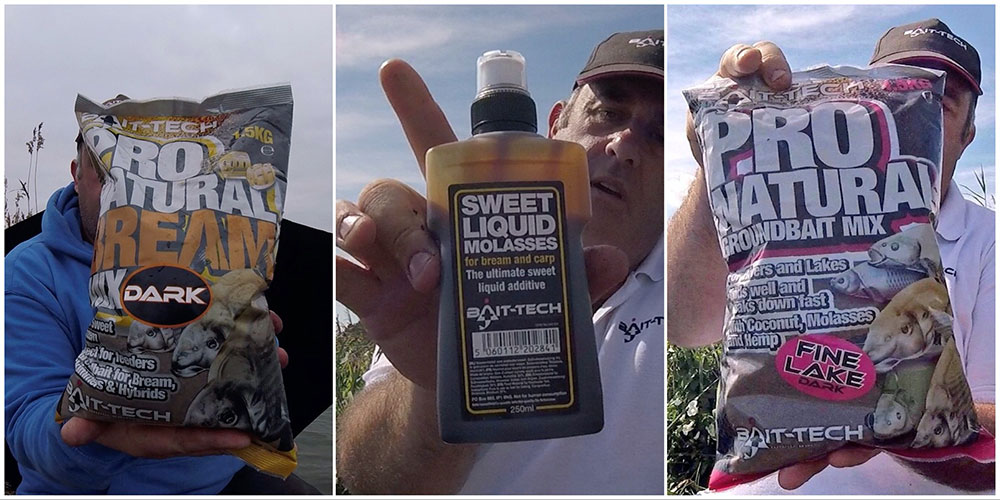
Extra Essentials
There are always one or two essentials that every angler has with them, and I am no different.
Most important is a flask or even two if the weather is cold. A hot drink is a no brainer and one flask can easily be gone in a couple of hours. A flask will make your winter fishing more enjoyable.
A pair of gloves to keep your hands warm is vital, try attaching a hooklength with numb fingers!
An umbrella for me is one winter item that can be worth its weight in gold on the river. Even the smallest of breezes can cut right through to the bone. Being a degree warmer behind a brolly can be the difference in being comfortable or not and I for one like a bit of comfort.
I have used a stopwatch for the last couple of seasons, which is something I have found a massive help. I know on commercials in winter, timing bites can be a game-changer and here on the river it’s no different. Most of the time, the feeder is going to be left out a fair amount of time, and I have found 10-15 mins being the norm. If you start getting one or two indications, then knowing when they happen in the cast is good knowledge to have. After all, why leave the feeder out for 12 minutes if regular indications came after eight or vice versa, knowledge is power as they say.
The last but no means least essential extra, is to keep it simple and don’t over complicate things. Very often I will just fish one method on one line, build the swim-up and take whatever comes along, keep it tight and keep it simple.
If you get a few bites then it has been a good day, if you get a few fish, then it has been a great day, and if you can snare a winter tench then it has been a brilliant day!
